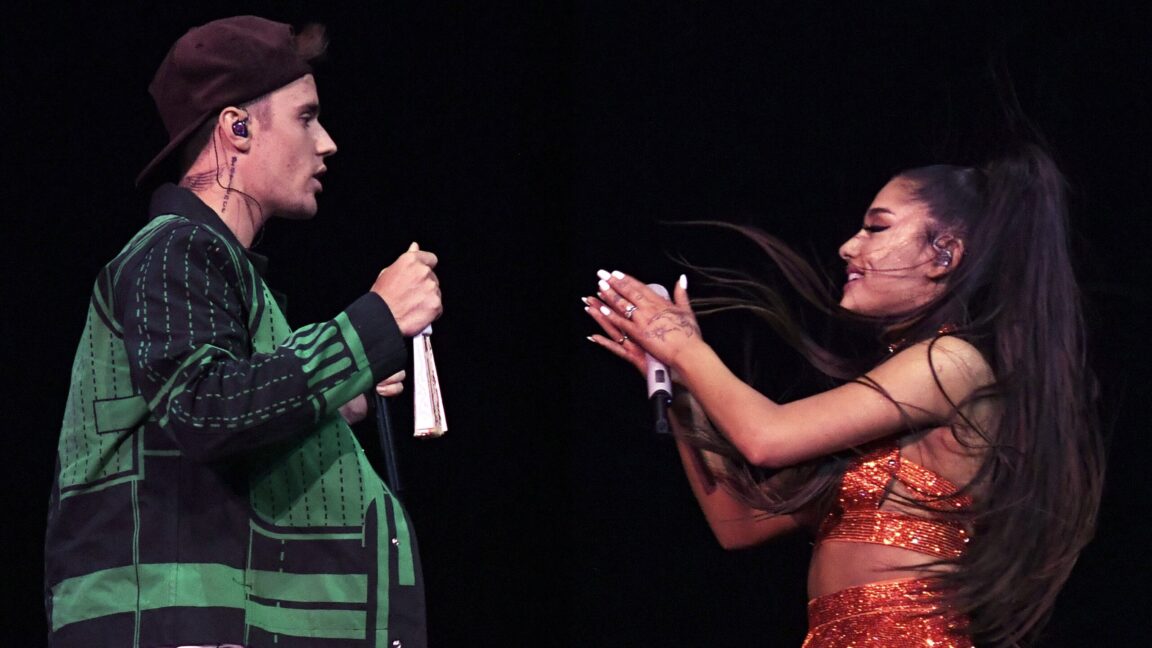The best of the best
It’s fun to look back on the triumphs of the DC Animated Universe, which still stands as one of the most accurate adaptations of Superman, Batman, and their many superhero comrades. Having already ranked the best episodes of Batman: The Animated Series and Justice League, EW is taking a look back at highlights from the biggest DC cartoon ever.
All episodes of Justice League Unlimited are now streaming on Max, but we’ll be referring to the episode order as they originally aired. Up, up, and away!
10. “Task Force X” (Season 2, Episode 4)
As the title suggests, this episode is all about the Suicide Squad, a group of supervillains who have been coerced into pulling off dangerous and suicidal missions for the government. Here, the paranoid Amanda Waller (CCH Pounder) tasks heavy Rick Flagg (Adam Baldwin) with bringing together Deadshot (voiced by Michael Rosenbaum, who usually plays the Flash), Captain Boomerang (Donal Gibson), Clock King (Alan Rachins), and Plastique (Juliet Landau) to break into the Watchtower and steal the Annihilator, a seemingly invincible piece of armor that was created by the gods and is powered by rage. What ensues is an excessively fun and suspenseful heist episode that breaks away from the show’s usual format and offers us an interesting look at the Justice League from another perspective—that of the supervillains and the government. Even though the Suicide Squad members are bad guys, you really can’t help but root for them to succeed. —Chancellor Agard
9. “This Little Piggy” (Season 1, Episode 5)
Part of the reason the DCAU stands as one of the best-ever adaptations of DC Comics superheroes is that the shows weren’t afraid to explore interesting character dynamics, regardless of whether there was source material precedent. The relationship between Batman and Wonder Woman is a prime example of that. The dark, cool-kid vibes of Kevin Conroy’s Dark Knight made a very interesting pairing with Susan Eisenberg’s caring den mother Amazon.
But still, it’s Batman and Wonder Woman. Actively pursuing a romance between two such canonical figures might have involved biting off more than the series could chew. So it could only be approached in oblique and abstract ways, such as in this uniquely campy episode. Batman: The Animated Series star writer Paul Dini returns to the franchise to write his favorite character Zatanna one more time, and credit where it’s due: The resulting weirdness certainly exemplifies the rule-breaking nature of magic. Just listen to Batman sing. —Christian Holub
8. “Ultimatum” (Season 1, Episode 9)
A unique representation of generational warfare here. The DCAU shows were the most popular animated adaptations of the Justice League since the ’60s Hanna-Barbera Super Friends cartoon. So what better way to honor that lineage than by taking original Super Friends characters—like Apache Chief and the Wonder Twins—and casting them as the young group of heroes trying to supersede the Justice League. Like a K-pop boy band, the Ultimen are raised and housed together inside a complex and guided through stardom by PR professionals. And like YouTube influencers, their notion of stardom differs greatly from their elders. It all builds to a tragic finale that powerfully sets up the threat of Amanda Waller and Cadmus.
7. “For the Man Who Has Everything” (Season 1, Episode 2)
JLU rarely attempted direct adaptations of comic book stories, but this episode makes a strong case that it should have done more. “For the Man Who Has Everything,” an adaptation of Watchmen duo Alan Moore and Dave Gibbons’ iconic Superman Annual #11 story, is one of the show’s most poignant installments ever, focusing on Superman (George Newbern) and Batman being trapped in a hallucination where all of their dreams eventually come true and the only way to break free is to give up their hearts’ desires. As Batman tries to free the Man of Steel, Wonder Woman fights to the death with Mongul, who’s responsible for Superman’s current predicament. The episode is only 22 minutes long, but it packs one hell of an emotional punch. And you know it’s good because it’s one of the rare times that Moore allowed his name to be placed on an adaptation of his work. —C.A.
6. “The Ties That Bind” (Season 2, Episode 2)
One of the best-ever Mister Miracle stories by someone other than creator Jack Kirby…well, at least until Tom King and Mitch Gerads came along, anyway. The DCAU team always had a knack for adapting Kirby’s New Gods, and this episode shows off their best dynamics—from Scott (Ioan Gruffudd) and Barda’s (Farrah Forke) lingering trauma over their upbringing on hellish Apokolips, to the lovely found-family dynamic they’ve created with Oberon (Dick Miller) on Earth. JLU‘s focus on politics also gets a fascinating foreign policy bent here. Just check out J’onn (Carl Lumbly) manipulating intergalactic power struggles between wannabe dictators! —C.H.
5. “Fearful Symmetry” (Season 1, Episode 6)
The Question was right.
Grant Morrison’s early 2000s New X-Men comics found mutant youth creating “Magneto Was Right” T-shirts to validate the views of the extremist leader in the wake of continued persecution from humans. Well, JLU‘s Question (Jeffrey Combs) has certainly earned his own equivalent of that phenomenon. Rewatching his monologues about grand world-conquering conspiracies by military and big businesses is a trip when similar conspiracy theories are a huge part of the current zeitgeist. DCAU’s depiction of the Question validate the kernel of truth within creator Steve Ditko’s paranoid distrust of mainstream culture. —C.H.
4. “Panic in the Sky”/”Divided We Fall” (Season 2, Episodes 11 and 12)
“Panic in the Sky” and “Divided We Fall” pick up where “Flashpoint” left off and bring the season’s Cadmus arc to a powerful conclusion. As the larger League is busy helping citizens who were displaced by the cannon blast and battling Cadmus’ Supergirl clone Galatea (Nicholle Tom) and her army of Ultimen, the original seven heroes go head-to-head with Lex Luthor, who has merged with Brainiac and plans on consuming Earth. These episodes deliver on the superhero action, especially when it comes to the Flash, who triumphantly saves the day after BrainiLex takes out the rest of his team. What’s remarkable about these episodes, though, is that they never lose sight of the season’s central question of “who watches the watchmen?” In fact, “Divided We Fall” somehow avoids a cop-out ending and concludes with Superman acknowledging his and the League’s recent failings as Earth’s protectors, and vowing to be more transparent and less godlike. —C.A.
3. “Destroyer” (Season 3, Episode 13)
The DCAU shows did more than anyone else to position Darkseid as the ultimate villain of the DC Universe. Whenever viewers heard Michael Ironside’s voice uttering evil commands, they knew things were serious. Confrontations with Darkseid marked the explosive finale of Superman: The Animated Series, the best episodes of the original Justice League series, and this, the final entry in the canon.
Writer Dwayne McDuffie and his team delivered a final battle worthy of the name. There are so many great moments, from Batman managing to dodge Darkseid’s unstoppable Omega beams to Superman’s incredible “world of cardboard” speech. One of the biggest ways the DCAU humanized Superman was by giving him a villain so powerful and so malicious that the Man of Steel was forced to exceed his own limitations in order to triumph. Enter Darkseid. —C.H.
2. “Epilogue” (Season 2, Episode 13)
Taking a page out of Buffy the Vampire Slayer‘s playbook, JLU wrapped up its season-long story in the prior episode and delivered something more reflective and intimate in the finale. “Epilogue,” which takes place in the future of Batman Beyond, essentially pays tribute to Bruce Wayne/Batman, the hero who started it all in Batman: The Animated Series, and gives him the touching happy ending he deserves and often never gets in other mediums. We dare you to watch this episode and not cry. —C.A.
1. “Question Authority”/”Flashpoint” (Season 2, Episodes 9 and 10)
Justice League Unlimited was the most political DCAU show, especially in its first two seasons, which were concerned with how the Justice League wielded its enormous power. Through the Cadmus arc—which saw the U.S. government become fearful of the League’s power and develop countermeasures in case it ever broke bad—the series raised complex moral questions like, should the League be allowed to work unchecked? What are the best uses of its power? Is there something inherently dangerous about the League? This thematic exploration climaxed in these two episodes, which are JLU’s smartest and most sobering half-hours because they take the government’s fears very seriously and admit that they may have a point.
Here, Superman’s arrogance is on full display in almost every interaction he was—with Lois Lane (Dana Delany), Emil Hamilton (Robert Foxworth), and the Question—because he can’t understand why people would be afraid of him and his super-powered friends. Not only that, but he turns around and launches an unsanctioned assault on a Cadmus facility. All of this creates a rather complex characterization of the Man of Steel, because we’re shown that he’s just as susceptible to darker human emotions like hubris. The Question, one of the heroes, is so frightened by the thought of an evil Superman that he does everything in his power to stop that from happening, like trying to kill Lex Luthor (Clancy Brown) before Superman gets the chance. All of this tension builds to the explosive twist in “Flashpoint”: Lex hacks the Watchtower’s big gun and fires on a government building, wreaking havoc in the surrounding area and further driving home just how dangerous the League could be (The sequence purposefully evokes 9/11, because this show was nothing if not topical when it aired). With these two episodes, JLU carefully threads the needle between glorifying and interrogating super-heroism. —C.A.
Honorable Mentions
“Initiation”: It’s a fun trick. The JLU creative team introduces us to this larger-than-life superhero show through the eyes of the most street-level vigilante around. Kin Shriner’s Green Arrow would go on to serve as a voice of reason throughout the epic events of JLU, and this episode is a perfect introduction.
“Kids’ Stuff”: With the influx of so many new heroes, the original lineup of Justice League took on more mentor-y roles in Unlimited. But this early episode gave them a break from that by temporarily transforming Superman, Batman, Wonder Woman, and Green Lantern into adorable little kids. The results are silly but also delightful—and like “This Little Piggy,” the use of magic once again becomes a way to ignite some WonderBat teasing.
“The Greatest Story Never Told”: What does alienated and walking joke of a hero Booster Gold do while the rest of the League is busy saving the day? That’s essentially the premise of this fun episode, which is basically the show’s take on Buffy‘s “The Zippo.”
“The Once and Future Thing”: JLU was the seventh installment in the DCAU, and some of its most interesting episodes were dedicated to showing the connective tissue between the others. In this mind-bending two-parter, time travel becomes a vehicle for a crossover among JLU, Batman Beyond, and even Static Shock.
“The Doomsday Sanction”: Batman telling Superman the last time he ever inspired people was when he died in Infinite Crisis is one of the most iconic comic book moments in history because there’s nothing better than seeing the Dark Knight put the Man of Steel in his place. JLU gave us a similar scene in “Doomsday Sanction,” which ends with Batman coldly dressing Superman down for sending Doomsday to the Phantom Zone without any due process.









:max_bytes(150000):strip_icc()/justice-league-unlimited-2000-36e4d5a420f2499d808708f00128b10d.jpg)





:max_bytes(150000):strip_icc()/AR-JF-15184-Mouth-Watering-Mushrooms-ddmfs-2x1-e6418200bc6e44f7971b53ef7b675bb7.jpg)
